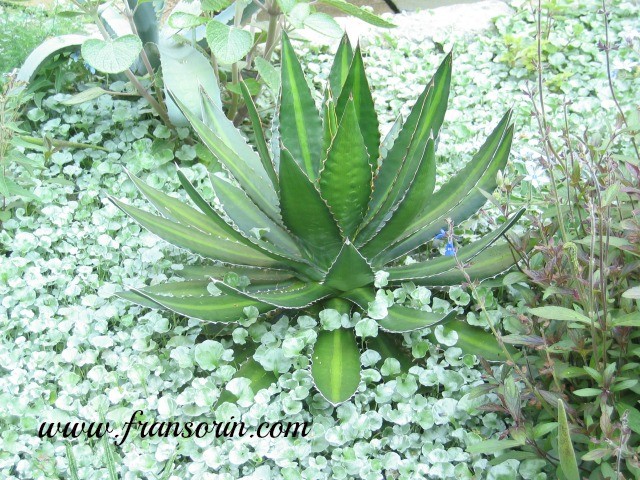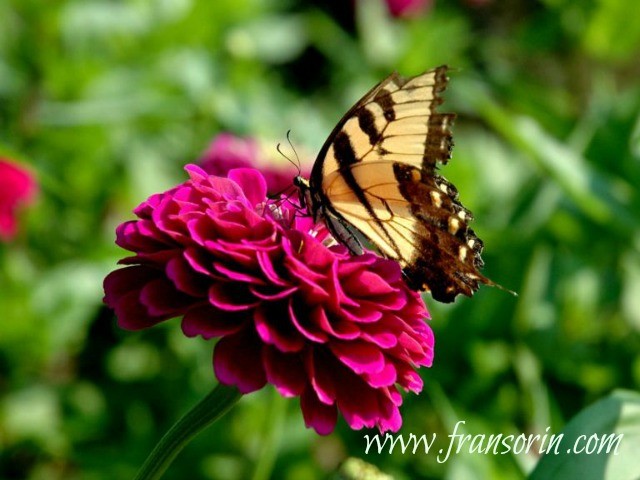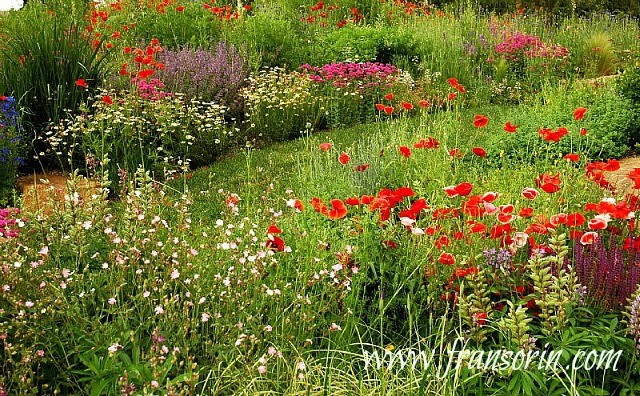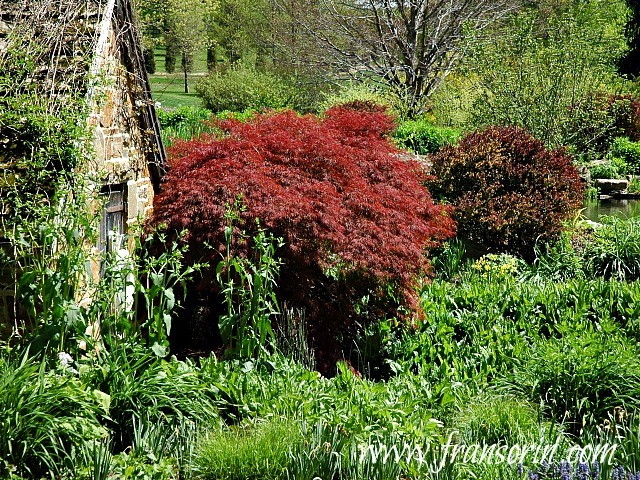Once the calendar flips over to the New Year, if you’re like a lot of gardeners throughout the world, you begin to think, research, and ponder new elements that you want to bring into your garden this season.
You can do all of the above, though, and still end up by late spring with a lackluster, boring garden; stuck in a rut and frustrated with the tremendous amount of time and effort you put in and left wondering what wrong.
I’ve been there before. I spent the first 5 years of my gardening life as the mother of an infant, following what the experts told me to do and playing it safe. The result? An ordinary garden. I knew that there had to be more to gardening than what I was doing. It is important to remember that this is your garden, so you can do what you want with it. You may decide to check out sites like Helpful Garden for some useful tips if you do get stuck for some inspiration. As long as you are happy with how it looks overall, that’s all that matters.
I was lucky that my university studies and the work that I had already done in the field of creativity galvanized me, by the time I was in my early 30s, to focus in on the creative process and how to implement specific and practical behaviors that would enable anyone to be creative in the garden…as well as in life.
Although I can spend hours talking about several things that you can do to unleash your creativity, my philosophy is teach only a few concepts at a time so that you don’t get overwhelmed. Long lasting change in behaviors usually occur with a slow and steady approach, what I call bite size changes.
So to begin with, here are 3 tips that will give you the tools to develop skills and take action this coming spring in order to envision your own personal paradise.
1. Exercise your imagination.
When was the last time you made a date with your imagination? Exercising this piece of your soul is a powerful tool in unleashing your creativity.
This is how to go about doing it.
Position yourself in a quiet place. Constant activity, noise, and being surrounded by others are roadblocks to listening in. You literally need to make quiet time for yourself, with no cell phones, kids, or interruptions of any sort. If need be, block out time on your calendar.
Wherever you are, sit in silence, breathe slowly and deeply, and close your eyes. Let your body relax and just stay with the breath. Try not to think. Focus on your breath, breathing deeply in and out. I sometimes repeat the phrase: “Thank you for my breath, thank you for my wonderful breath.”
Once you’re relaxed, imagine yourself in some beautiful setting that you’ve either visited, dreamt about, or seen in a magazine, book, or movies.
Place yourself in the setting and allow all of your senses to take in the beauty that envelops you. The more detail that you incorporate into the story line, the better. Remember, your imagination can take you wherever your desires want. There are no limits. All you have to do to access it is open the internal windows and set it free. I have seen even the most buttoned-down serious types come alive like a little kid in their garden once they let themselves go and start to play.
Photo Source: Flickr
If you envision fields of lavender and olive trees in the hills of Provence, how does it smell when you get up close to the lavender? What does the earth feel like when you rub it between your fingers? How does the breeze in Southern France feel on your skin? What does the sky and landscape from afar look like? What feelings does it emote in you?
Another strategy is to think about a time from your childhood when something in nature grabbed your attention. It can be anything from playing in a pile of leaves, to chasing butterflies, to pulling dandelion weeds to sitting under the safety of a big tree.
One of my strongest memories is going out into the garden and cutting lilacs from a huge hedge that separated our driveway from our neighbor’s backyard in Rochester, New York. The scent and sight of these soft trillium colored lilac flowers overwhelmed my senses.
The only thing you need to do from the outset is to commit to not having any agenda but to just let your imagination frolic and have fun.
There’s nothing to figure out here–nothing you need to accomplish, no puzzle you need to solve. You can’t claim your imaginative powers through force. A sense of wonder is not something to achieve, but rather something to awaken, moment by precious moment.
Try to do this at least once a day for 5-10 minutes.
2. Observing
In the fast-paced, technologically obsessed world we live in today, so many of us move through our days as if blindfolded. We race from item on our to do list to the next, hurriedly trying to get it all done better and quicker, barely taking notice of that which is around us. It’s not our fault really-it’s just the way our world works.
We may pride ourselves on getting everything done, but how much space does that leave to truly and deeply experience anything? Though we may not know it, we are slowly becoming alienated from a primary source of our creativity-our senses.
Observing is the polar opposite of that. It means tapping all our senses to really see, feel, taste, smell, and touch the world around in such a way that we reconnect with our sensuality. We awaken our aesthetic intelligence, our appreciation for beauty, harmony, melody, aroma and sensation.
Observing the natural world around us is one of the simplest ways to begin to awaken our senses and stimulate our creative fires.
For example, you may pass the same group of wildflowers on your way to work day after day, but if you consciously pause to take it in, you bring it into sharper focus and may experience it differently. Maybe this time you’ll feel the silky petals, soft as cashmere, or see the reds, fiery and vibrant as a late-summer sunset, or the brilliant yellows that remind you of the joyful freedom of picking buttercups as a child.
Magical things happen when you slow down, observe, and wake up your senses.
Like taking time to exercise your imagination, it’s important to do the same if you want to hone your observational skills.
It’s easy to do. Here are a few ideas: Try eating your lunch on a park bench, slowing down while taking a walk and noticing up close elements of nature, or even doing a walk about on your own property.
3. Discovering
Often the scariest question to answer can be, What do I want? The sheer open-ended boundlessness can be overwhelming. The choices seem so vast that it feels practically impossible to land on anything at all.
When thinking about designing a garden, discovering your wishes is one of the most basic ways to begin to unearth your authentic roots. In order to create anything that has true resonance for you, you first must know what really grabs your soul. Otherwise, you’re just casting about, dabbling with this or that-out of which you may or may not create a solution.
In the garden, there are literally thousands of options that you can incorporate. And with the amount of information we have at our fingertips, it can be quite overwhelming.
To help you become familiar with your likes and dislikes, do the following Discovery Exercise.
First, get your hands on any gardening or home magazines that you can. Don’t be shy about borrowing from friends if you don’t have enough of your won.
Set aside a designated amount of time and begin to browse through and earmark anything that grabs your fancy and relates to gardening. It can be flowers, an actual garden bed, a type of tree, a fountain or pergola, or just the overall feel of a garden.
Tear out anything that speaks to you. Don’t censor yourself here-there are no rules. Just have fun. Pick and choose and rip out as you feel inclined. Take breaks if you need to. You don’t need to cram a whole garden’s worth of inspiration into one afternoon.
Use Pinterest as an element to discover what elements of a garden light you up and save them in categories. I also encourage you to pick up a few gardening books that appeal to you. Go through pages and put Post-its on the ones that you find particularly appealing-even if you don’t know why.
As you peruse and dream, try not to let the “how to” element sneak in. That’s the censor of your mind trying to impose limits. Think of this exercise as brainstorming. Don’t worry about what to do with the material or how you’ll translate it into your own garden. Take pleasure in finding things that speak to you without having to give it structure or meaning.
Being honest about your likes and dislikes frees you from the tyranny of other people’s opinion, which can often cloud your own authentic desires.
Keep the pictures that you collect safely tucked away to take out and look at whenever you want (In my book, Digging Deep: Unearthing Your Creative Roots Through Gardening, this exercise is put to use in later chapters).
In Summary
If you consistently practice exercising your imagination, observing, and discovering, you’ll experience the magical effect of being able to envision the garden of your dreams.
To do more exercises and learn in depth about how to unleash your creativity in the garden and design the garden of your dreams, check out my recently published book, Digging Deep: Unearthing Your Creativity In The Garden, 10th Anniversary Edition.
Now I have a favor to ask of you.
I’d love to know what issue you struggle most with when envisioning your garden each season. By sharing your thoughts, you’re helping me to better understand how I might be more helpful to you.
Please leave your comments below or click on ‘respond’ in this e-mail and send it to me directly.
And if you have any questions about creativity in the garden, ask me. I read every e-mail I receive and will respond personally to yours.
Thanks so much for taking the time to do this.
Wishing you joy, creativity, and well-being for 2015. With love, Fran
P.S. If you enjoyed this post, please share it with others on social media. It’s an easy way of being generous and sharing my message. I appreciate it!





